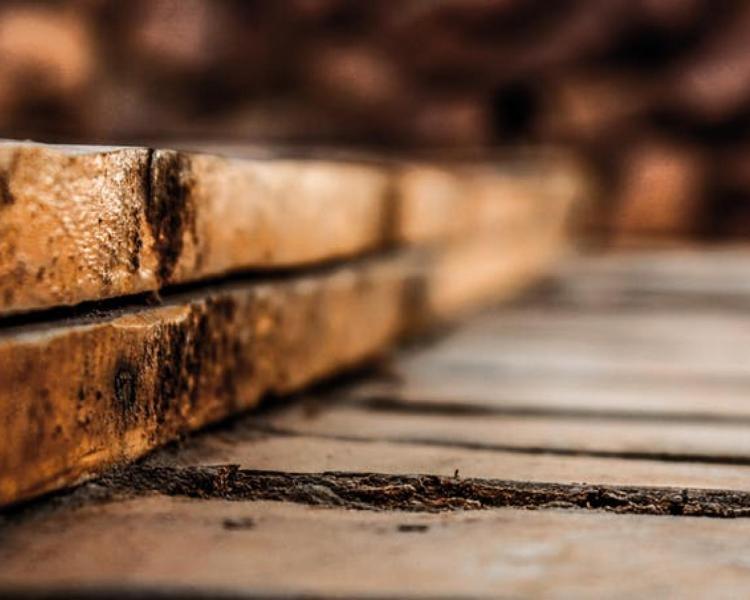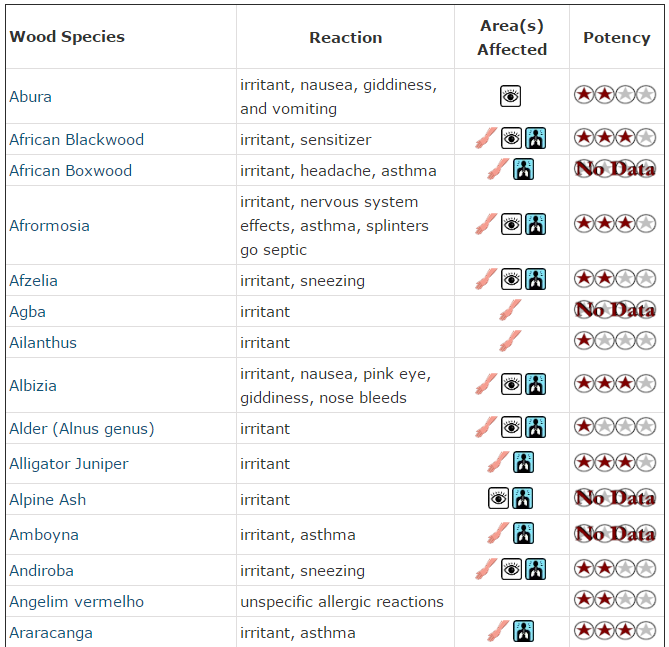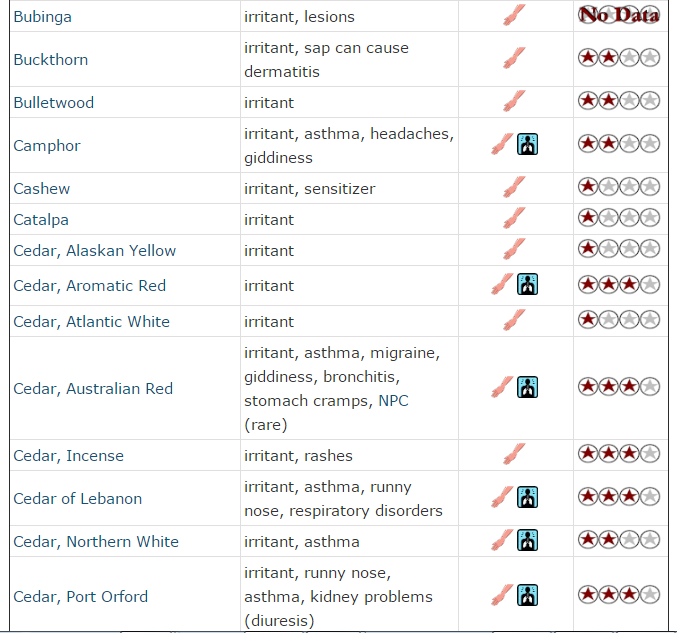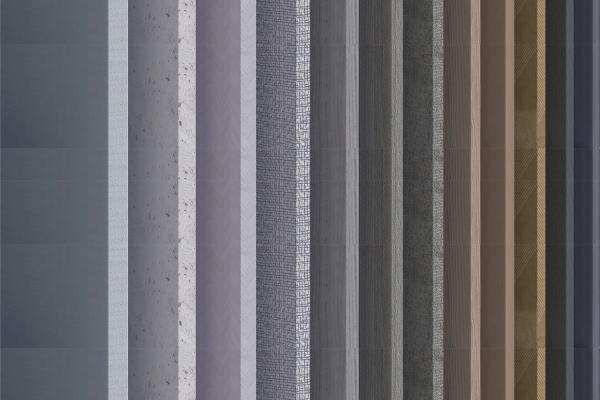Wood Allergies and Toxicity
مشاركة

–Pliny the Elder, from Naturalis Historia, ca. 77 AD
“Not to omit any one of them, the yew is similar to these other trees in general appearance . . . It is an ascertained fact that travellers’ vessels, made in Gaul of this wood, for the purpose of holding wine, have caused the death of those who used them.”
Looking at the above quotation, (taken from a writing nearly two thousand years old), ought to bring—at the very least—a small bit of respect and attention to the matter of safety as it pertains to wood toxicity. If this subject has been known and reported as “ascertained fact” since ancient history, how much more ought we to take heed in modern times, considering that we have so many more well-developed means of communication and testing?
Wood Toxicity and Allergen Chart
Below you’ll find a chart of various wood species, along with their reported effects and properties. The information on this chart has been compiled from many sources, with references given at the bottom. When viewing the chart, please keep the follow in mind:
Just because any given wood is not listed on the chart, does not mean that it is completely safe to use. It simply means that adverse reactions have not been reported as of yet. (The wood may be very obscure or unknown.) One helpful thing to do if you have confirmed that you’re allergic to a specific species of wood, is to check for related species (listed at the end of each wood profile page). Many times, a wood in a particular genus will share similar allergic compounds with other related woods, resulting in cross-reactions.) For example, Cocobolo is in the Dalbergia genus, and is also closely related to other woods such as Kingwood, Tulipwood, Honduran Rosewood, etc. Also, you may notice two wood types that sound like they’re related, such as Black Cherry (Prunus genus) and Brazilian Cherry (Hymenaea genus), but they are actually quite unrelated.
All inhaled wood dust is hazardous to your long-term health. This chart simply lists specific woods that can aggravate symptoms through allergic reactions, or woods that are outright toxic in and of themselves. However, all woods produce fine dust when worked, which in turn can damage your lungs and cause a number of other adverse health reactions. (This particular health issue—and the unhealthy buildup of such dusts in small woodworking or hobbyist shops—has been dealt with at length on Bill Pentz’ website.)
A common question: is this wood safe to use as a plate/bowl/cutting board/etc.? Despite the very long list of woods below, very few woods are actually toxic in and of themselves. But what a great number of woods do have the potential to do is cause allergic reactions in sensitive individuals. This risk for finished wood projects is greatly lessened (but not eliminated) with the application of a food-safe finish. In the end, using almost any wood is a calculated risk, and the question boils down to this: how much of a potential risk am I comfortable with? 1 in 10? 1 in 1,000? 1 in 1,000,000?





